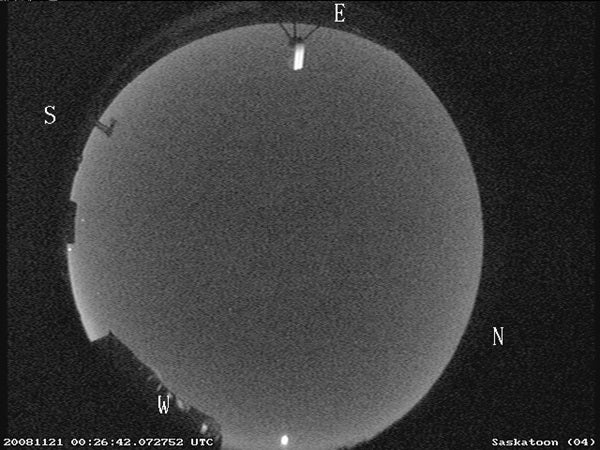Check out this CTV news story about the event, “Fire in the sky.”
The brief flashes of light typically seen during a meteor shower arise from pieces of interplanetary debris no bigger than a grain of sand. Bright meteors and fireballs — meteors that reach or exceed the approximate brightness of Venus — may be as big as a garden-variety pea. In contrast, the brilliant fireball over western Canada may have been a foot or two in diameter when it entered Earth’s atmosphere.
No one yet knows whether any pieces of this meteor survived the fiery passage through Earth’s protective blanket of air. Researchers suspect if any fragments reached the ground (where they officially would become meteorites), they likely would be found near the Alberta-Saskatchewan border. Once scientists examine the videos and determine the debris’ precise path, they can narrow the search zone to a reasonable size.
Richard Huziak and Gordon Sarty are two amateur astronomers that help maintain the all-sky meteor camera on the roof of the University of Saskatchewan physics building. See their video of the event below.










